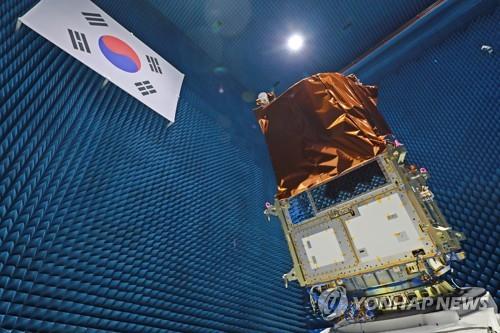Ministry of Science and Technology “Identifying the exact cause…in the afternoon of the 21st, checking whether launch is possible”
(Seoul = Yonhap News) Reporter Joo-young Lee = The Ministry of Science, ICT and ICT has tentatively postponed the launch of the next-generation medium-sized satellite 1, which was scheduled to be launched at the Baikonur Space Center in Kazakhstan at 3:7 pm (11:7 am local time) on the 20th. He said it was done.

The Ministry of Science and ICT announced that the launch of the’next-generation medium-sized satellite 1′, which was scheduled to be launched on the afternoon of the 20th at the Baikonur Space Center in Kazakhstan, has been temporarily delayed. The picture is the 1st next-generation medium-sized satellite undergoing an electromagnetic environment test. [한국항공우주연구원 제공. 연합뉴스 자료사진. 재판매 및 DB 금지]
The reason for the delay of launch is known as a problem detected in the upper part of the Soyuz 2.1a launch vehicle, which was scheduled to be launched with the next-generation medium-sized satellite No. 1, a cube satellite, and a Japanese satellite.
An official from the Ministry of Science and ICT said, “The Baikonur space center’s local launch technician is grasping the exact cause,” he said. “We are checking if the launch is possible at the same time on the afternoon of the 21st.”
Next-generation medium-sized satellite No. 1 moved to the Baikonur Space Center on January 22, and the Korea Aerospace Research Institute’s technical staff completed the preparation for launch, such as functional inspection, fuel injection, and launch vehicle and assembly for more than 50 days.
The satellite is equipped with an optical camera with a resolution of 0.5m in black and white and 2.0m in color. After launch, it is expected to be active in solar synchronous orbits at an altitude of 497.8km and provide precise ground observation images, wide-area agricultural and forest conditions observation images, and water resource observation radar images. do.
Unauthorized reproduction-prohibition of redistribution>
2021/03/20 15:45 sent
